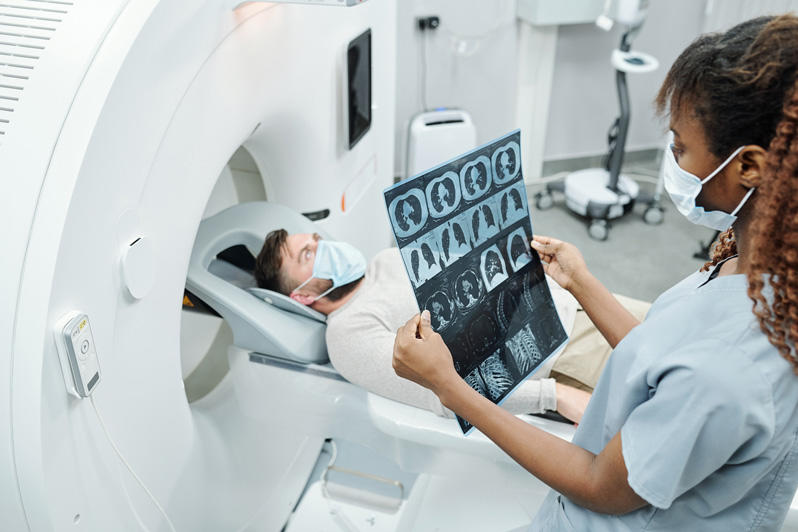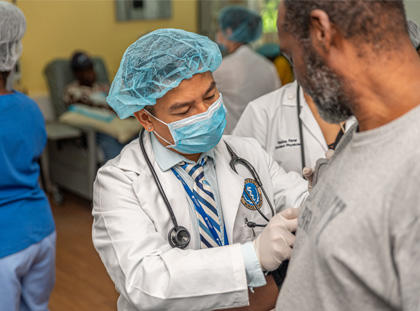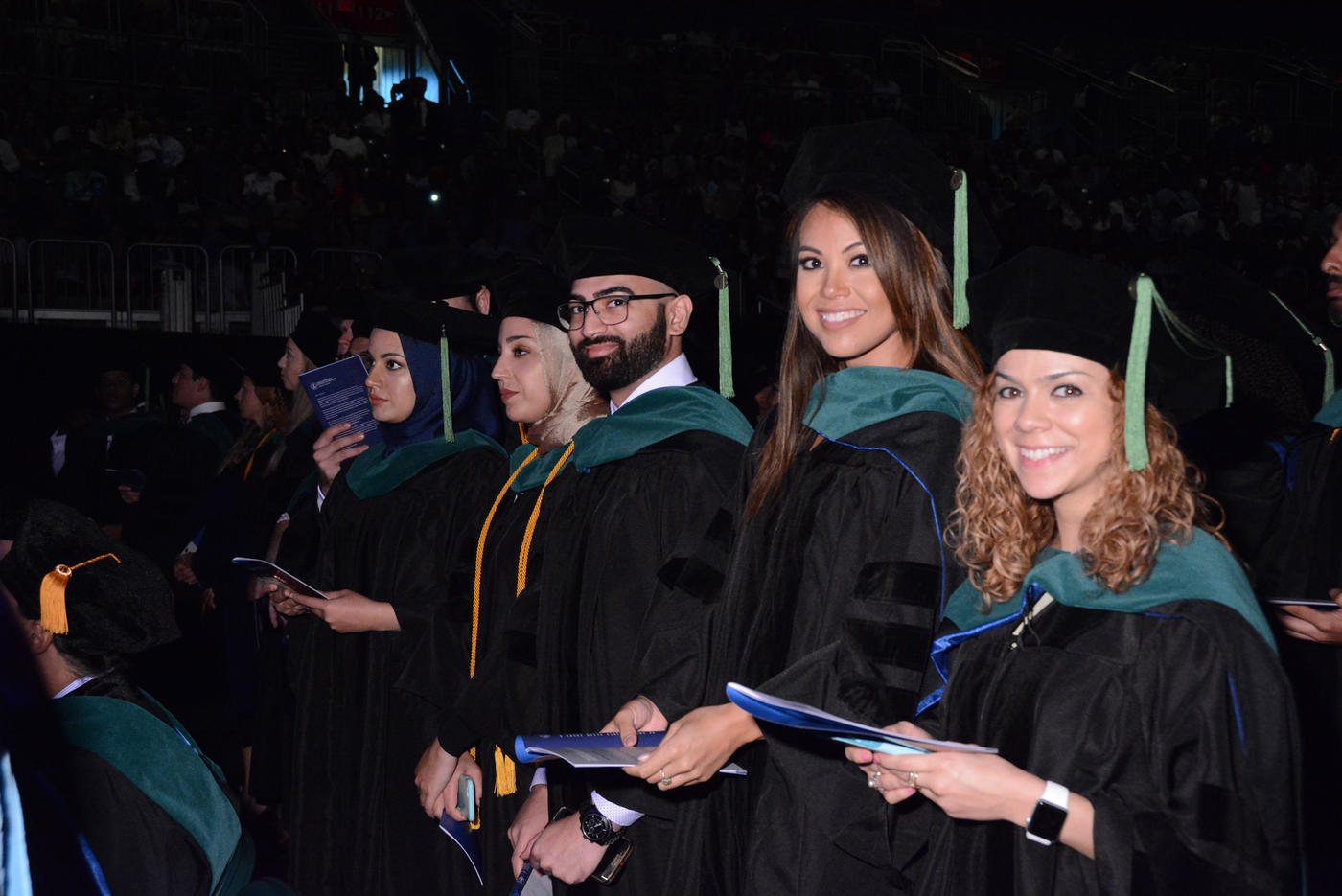Radiologists are some of the most important doctors you may never see. A radiologist is a doctor who interprets or “reads” medical images to diagnose and treat diseases or injuries. To generate these images, doctors of radiology use such technologies as computed tomography (CT) scanning, magnetic resonance imaging (MRI), nuclear imaging, positron emission tomography (PET), X-rays, and ultrasound. These images and the training radiologists use to read them are vital to detecting and treating illness, injury, and other chronic problems.
What Does a Radiologist Do?
Radiologists may have various tasks according to their specialty, but most do not take part in the physical placement and scanning of the patient. That work is typically done by a technician. Instead, radiologists direct the action behind the scenes. Diagnostic radiologists determine what type of imaging should be done and then interpret the results. These radiology specialists detect tumors, injuries, and other conditions. Often, surgeons use images prepared by diagnostic radiologists to plan their procedures.
Another kind of radiologist is called an interventional radiologist. This type of radiologist is a highly trained expert in performing minimally invasive surgeries that rely on medical imaging. They generally work on the thorax, abdomen, pelvis, and extremities. They perform angioplasty and stent placement, drainage, embolization, thrombus management, and more.
A third type of radiology is called radiation oncology. This kind of radiologist uses ionizing radiation to treat cancer or other diseases. This treatment relies on the fact that dividing cells are vulnerable to radiation, and cancer cells divide more often than healthy cells. Radiologists know which type of radiation to use and how to direct it at cancer cells. Radiation oncology is the treatment of choice for some cancers.
Whatever kind of radiology you pursue, you will need to keep up with relevant technology. For example, rapid improvements in equipment and computer power continue to enhance PET scans, to cite only one type of imaging technology. Becoming a radiologist means a commitment to lifelong learning as the specialty and its technologies continue to develop.
We have answered the question, what does a radiologist do? Now let’s find out how to become a radiologist and answer the question, how long does it take to be a radiologist?
Educational Requirements for Radiologists
When considering how to become a radiologist, the student must first graduate from an accredited medical school such as Ross University School of Medicine (RUSM)*. The path to a medical degree at RUSM, which is located on the Caribbean island of Barbados, is similar to United States-based schools: two years of medical science classes and two years of hands-on clinical training. For RUSM students, the medical sciences curriculum is completed at the Barbados campus; the clinical training can be completed at affiliated teaching hospitals in the United States.
During clinical training, RUSM students complete core rotations in internal medicine, surgery, pediatrics, family medicine, obstetrics/ gynecology, and psychiatry. Each individual student, then, selects from among dozens of specialty elective clerkships to fulfill their clinical requirements.
During the fourth and final year of medical school, students prepare for the next phase of their medical education: residency. At RUSM, the Office of Career Advisement (OCA) can help students determine which residency specialty—such as radiology—may suit them best. The OCA also helps students negotiate the National Resident Matching Program® (NRMP®)—a placement system which medical students who want to obtain licensure in the United States use to “match” with a medical residency. A radiology residency generally lasts five years.
In 2021, RUSM had a first-time residency attainment rate of 92 percent for 2020-2021 graduates, a rate comparable with the overall match rate (93 percent) for medical schools in the United States. In recent years, RUSM MD’s have matched with radiology residency programs at Cleveland Clinic Imaging Institute in Florida; the Icahn School of Medicine Mount Sinai and Lincoln Medical Center in New York; and St. Joseph Mercy Oakland in Michigan.
After completing radiologist schooling, a physician may be certified by the American Board of Radiology (ABR). The medical association that represents radiologists is called the Radiology Society of North America® (RSNA®).
Radiologists often continue their radiologist education by pursuing a subspecialization fellowship of one or two years. Radiologist schooling may culminate in such subspecialties as:
- Hospice and Palliative Medicine
- Neuroradiology
- Nuclear Radiology
- Pain Medicine
- Pediatric Radiology
- Vascular and Interventional Radiology
Now that you know how to become a radiologist, prepare yourself for the challenge and get all the necessary application materials in place. Then apply for admission to RUSM to start your radiologist education.
Related Resources:
*Ross University School of Medicine is accredited by the Caribbean Accreditation Authority for Education in Medicine and other Health Professions (CAAM-HP, www.caam-hp.org).
CAAM-HP is the legally constituted body established in 2003 under the aegis of the Caribbean Community (CARICOM), empowered to determine and prescribe standards and to accredit programs of medical, dental, veterinary and other health professions education on behalf of the contracting parties in CARICOM.
Accreditation by CAAM-HP is a rigorous, peer review process which examines all aspects of a medical program. The CAAM-HP board, an independent and autonomous body of professionals, only certifies medical schools which are operating at the highest levels of industry standards.
Through this accreditation, the CAAM-HP provides assurance to medical students, graduates, the medical profession, healthcare institutions and the public that programs leading to qualifications in medicine meet appropriate national and international standards for educational quality, and that the graduates have a sufficiently complete and valid educational experience.




